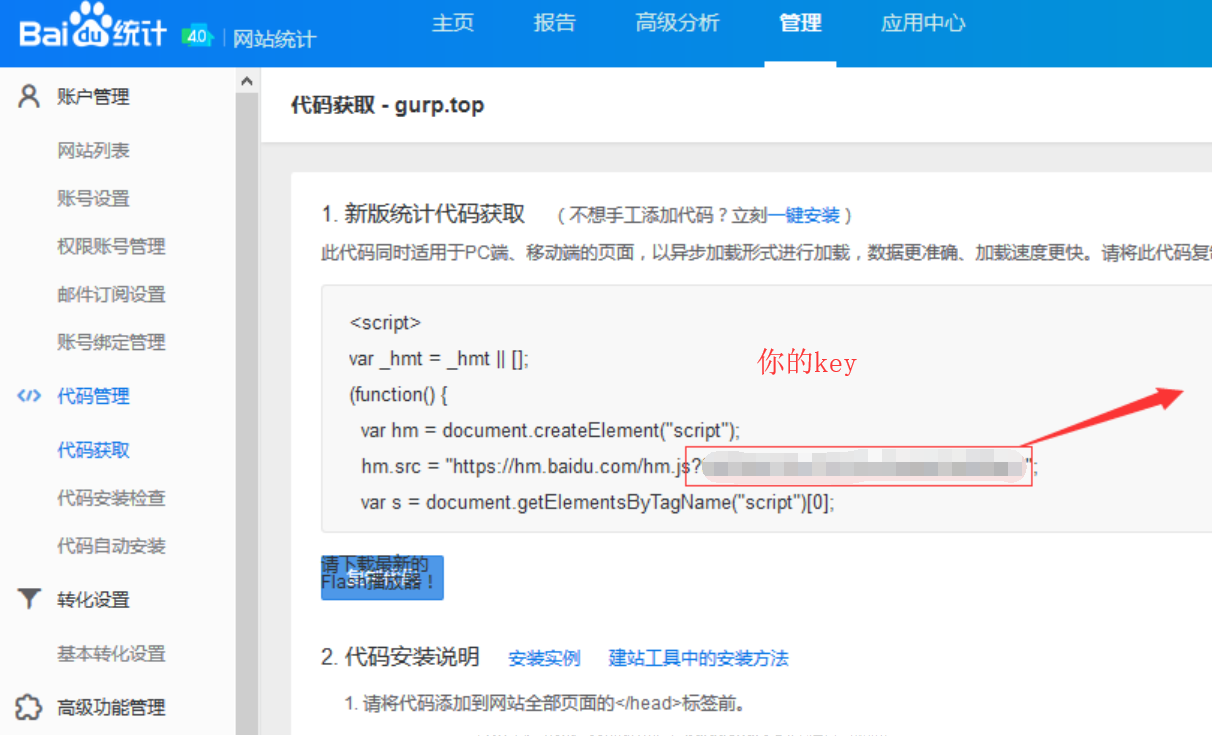Hexo添加搜索功能与百度分析
原创💡 Abner Mai 2021-08-30 约 1034 字 大约 3 分钟
# Hexo添加搜索功能与百度分析
前两篇文章讲了搭建Hexo个人博客和主题的更换:
但是主题里边有个搜索功能,一开始使用的时候,浏览器控制台总是报错,说content.json 404
懵了,主题切换的时候没注意,然后一直想怎么弄出来这个文件
现在,开始添加搜索功能,然后在加入百度分析
# 搜索功能
# 自动生成
一个很简单的方法,那就是让它在构建的时候自己生成"content.json"文件
- 打开 Git Bash Here 程序
- 输入命令
npm i -S hexo-generator-json-content安装组件 - 在相对应的主题目录下的 "_config.yml" 文件下加入配置代码:
# 自动生成content.json # https://github.com/alexbruno/hexo-generator-json-content jsonContent: meta: true keywords: false # language name option dateFormat: undefined # format string pages: title: true slug: true date: true updated: true comments: true path: true link: true permalink: true excerpt: true keywords: true # but only if root keywords option language was set text: true raw: false content: false posts: title: true slug: true date: true updated: true comments: true path: true link: true permalink: true excerpt: true keywords: true # but only if root keywords option language was set text: true raw: false content: false categories: true tags: true1
2
3
4
5
6
7
8
9
10
11
12
13
14
15
16
17
18
19
20
21
22
23
24
25
26
27
28
29
30
31
32
33
34
35
36 - 依次输入命令:
- 输入命令
hexo clean清除缓存 - 输入命令
hexo g构建 - 输入命令
hexo d部署
- 输入命令
- 在hexo目录下会生成public文件夹,在这个文件夹下就可以看到 "content.json" 这个文件了(可以打开,建议格式化之后在区查看)
- 部署好之后,可以在自己的hexo主页使用搜索功能了
# 手动添加
手动添加呢,有点费时间,不过可以自定义条件
首先来看一下有哪些配置项
{ "meta":{ "title":"", ## 博客标题 "subtitle":"", ## 博客子标题 "description":"", ## 博客描述 "author":"", ## 博客作者 "url":"" ## 博客首页地址 }, "pages":[ ## 非博客博文的一些页面, 即不在hexo\source\_posts目录下的,但在hexo\source下的md页面 { "title":"", "date":"", ## 博客发布时间 "updated":"", ## 博客更新时间 "comments":true, "path":"", ## 在当前首页地址下的路径 "permalink":"", ## 页面全路径 "excerpt":"", "text":"" ## 页面内容 } ], posts: [ ## 在hexo\source\_posts目录下的md文件生成的页面,即博文 { "title":"", ## 博文标题 "slug":"", ## 博文md文件的文件名 "date":"", ## 时间 "updated":"", ## 更新时时间 "comments":true, "path":"", ## 在当前首页地址下的路径 "link":"", "permalink":"", ## 页面全路径 "excerpt":"", ## 博文描述文字 "text":"", ## 博文内容 "categories":[ ## 分类 { "name":"Hexo", "slug":"Hexo", "permalink":"https://maiyikai.github.io/categories/Hexo/" ## 分类文件路径 } ], "tags":[ ## 标签 { "name":"Hexo", "slug":"Hexo", "permalink":"https://maiyikai.github.io/tags/Hexo/" ## 便签文件的路径 } ] } ] }1
2
3
4
5
6
7
8
9
10
11
12
13
14
15
16
17
18
19
20
21
22
23
24
25
26
27
28
29
30
31
32
33
34
35
36
37
38
39
40
41
42
43
44
45
46
47
48
49其实用不了这么多,简易版的:
{ "meta":{ "title":"", "subtitle":null, "description":"", "author":"", "url":"" }, "pages":[ ], "posts":[ { "title":"", "comments":true, "path":"", "text":"Windows Hexo 博客 github Git GitHub" ## 匹配一般只匹配title 和text的内容 } ] }1
2
3
4
5
6
7
8
9
10
11
12
13
14
15
16
17
18
19
20写好这个文件之后,把它放在hexo\source文件夹下即可
依次输入命令:
- 输入命令
hexo clean清除缓存 - 输入命令
hexo g构建 - 输入命令
hexo d部署
- 输入命令
部署好之后,可以在自己的hexo主页使用搜索功能了
注:手动添加的方式一定要注意,添加或更新博文时,要同步更新 "content.json" 文件,否则会出问题
# 加入百度分析
- 百度分析注册/登陆地址:https://tongji.baidu.com/web/welcome/login (opens new window)
- 登陆之后,点击“代码管理>>代码获取”,看下图:

- 将这个key复制出来
- 修改主题目录下的 "_config.yml" 文件中的
baidu_analytics,如下图

- 依次输入命令:
- 输入命令
hexo clean清除缓存 - 输入命令
hexo g构建 - 输入命令
hexo d部署
- 输入命令
- 部署上去之后就可以了
参考文章:
